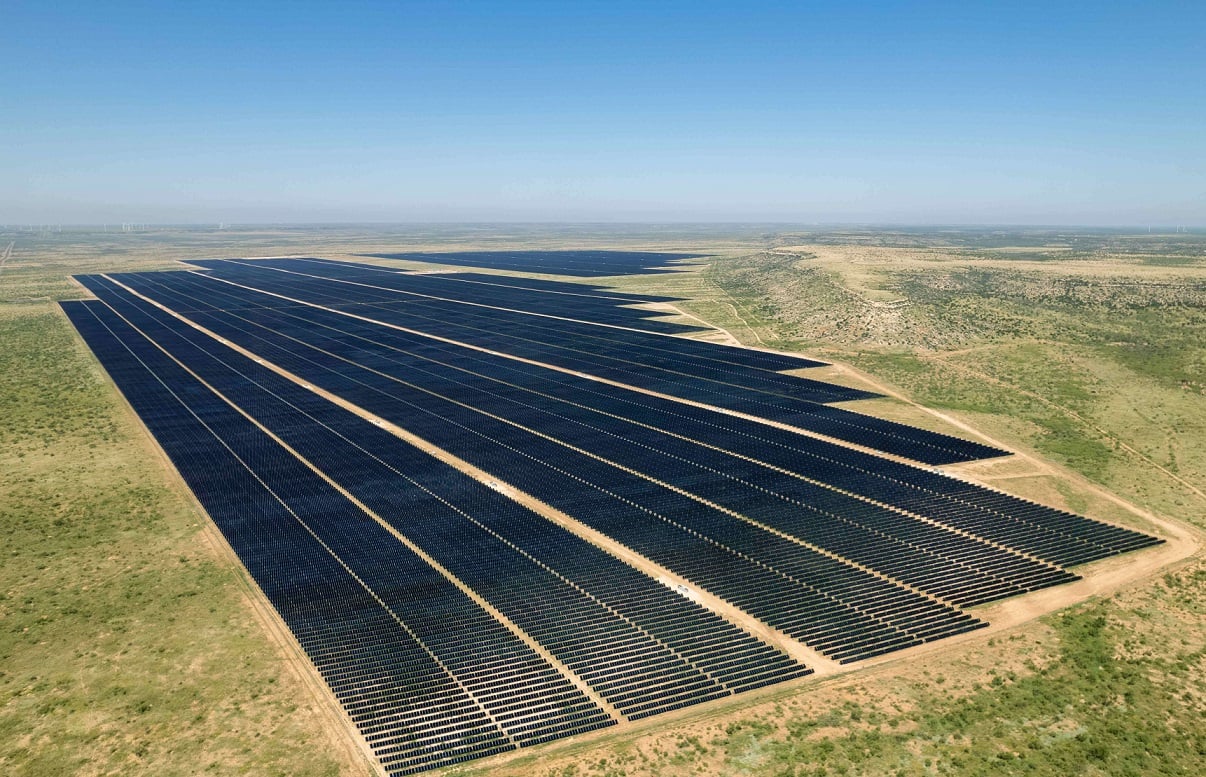SB Energy inaugurates 900MW Texas PV cluster with Google data centre PPA
October 21, 2024

The projects comprise over 1.3 million Cadmium Telluride (CdTe) thin-film modules from US manufacturer First Solar, supplied from the company’s manufacturing facility in Perrysburg, Ohio. First Solar has also started developing two other US module manufacturing sites in Alabama and Louisiana. By the time they are completed in 2026, the company said that it intends to have reached 14GW of nameplate production capacity in the US.
Additionally, the Orion Solar Belt includes Nextracker smart solar trackers, with the majority of the components manufactured domestically. SB Energy selected Blattner to provide the project’s engineering, procurement and construction services.
The domestic content bonus adds a 10% tax credit on top of the 30% production tax credit (PTC) already included under the IRA. To qualify, projects must be built with at least 40% “US-made” components, as defined by the Department of Treasury and calculated on a basis of cost. This threshold will rise to 55% next year.
At the project’s launch, US Secretary of Energy Jennifer Granholm, who was present, said the Orion Solar Belt embodies the Biden-Harris Administration’s industrial strategy for clean energy, developed and built by Americans.
“This future is seen in action through the Orion Solar Belt in Texas,” Granholm said, adding: “This project showcases how American-made clean energy can power data centres and our future.”
Orion Solar Belt to supply Google data centres
Readers of PV Tech may be aware that the Orion solar PV projects will supply technology giant Google’s data centres in Ellis County and its Dallas cloud region via a power purchase agreement (PPA) inked in November 2022.
At the time, the PPA was Google’s largest combined clean energy transaction in Texas and remains the technology giant’s largest solar-based energy investment worldwide. The agreement came as part of its professed commitment to operate “every hour of every day” on carbon-free energy by 2030.
Ben Sloss, vice president of 24×7 & capacity at Google, expressed that the company is “thrilled” for the Orion Solar Belt to come online and that it is “helping build a stronger future for communities and Google in Texas”.
Earlier this year, Google announced plans to invest over US$1 billion in Texas. This investment aims to enhance its cloud and data centre infrastructure to meet the increasing demand for Google Cloud services, AI, and other digital products that people and organisations use daily, including Search, Maps, and Workspace.
Search
RECENT PRESS RELEASES
Related Post




